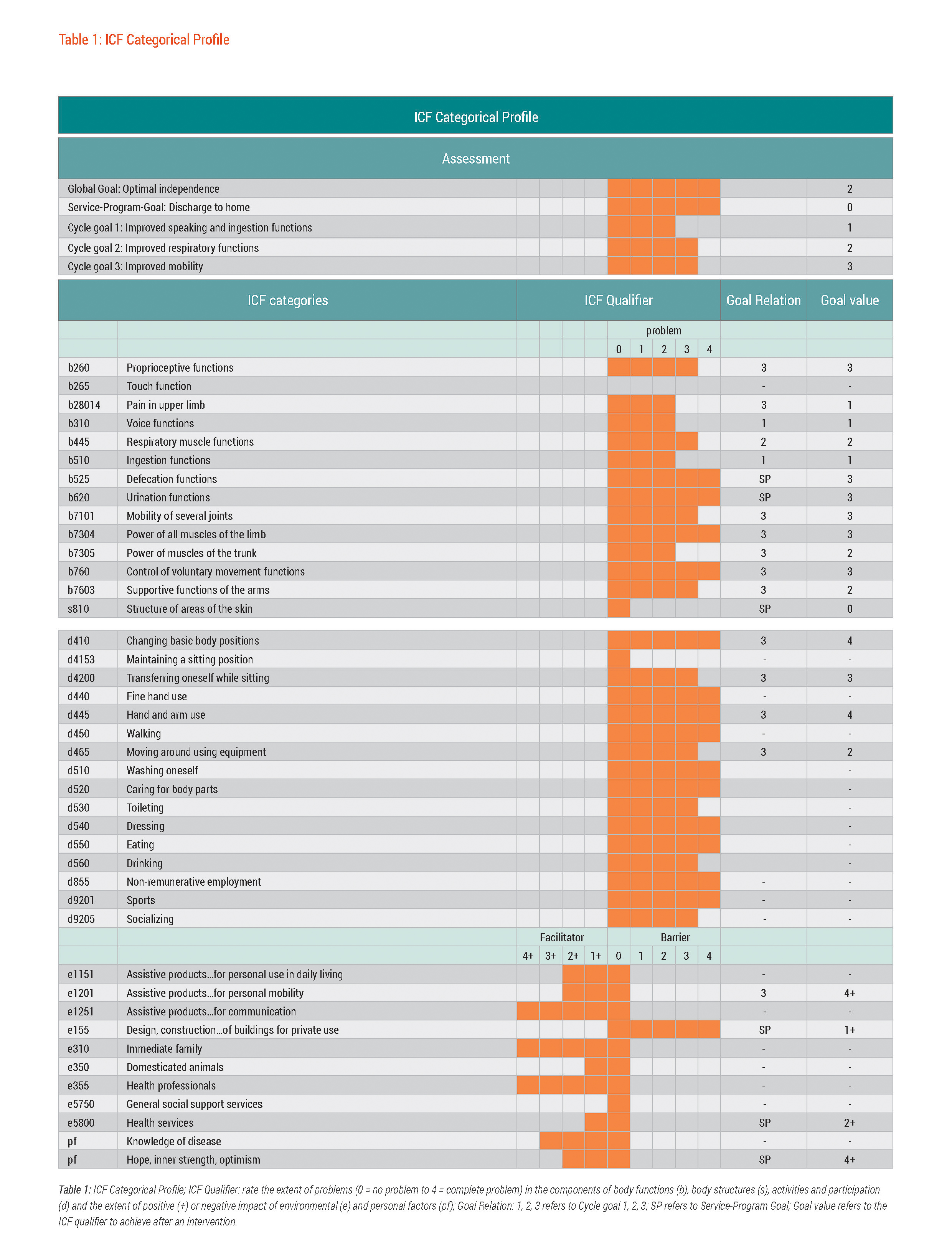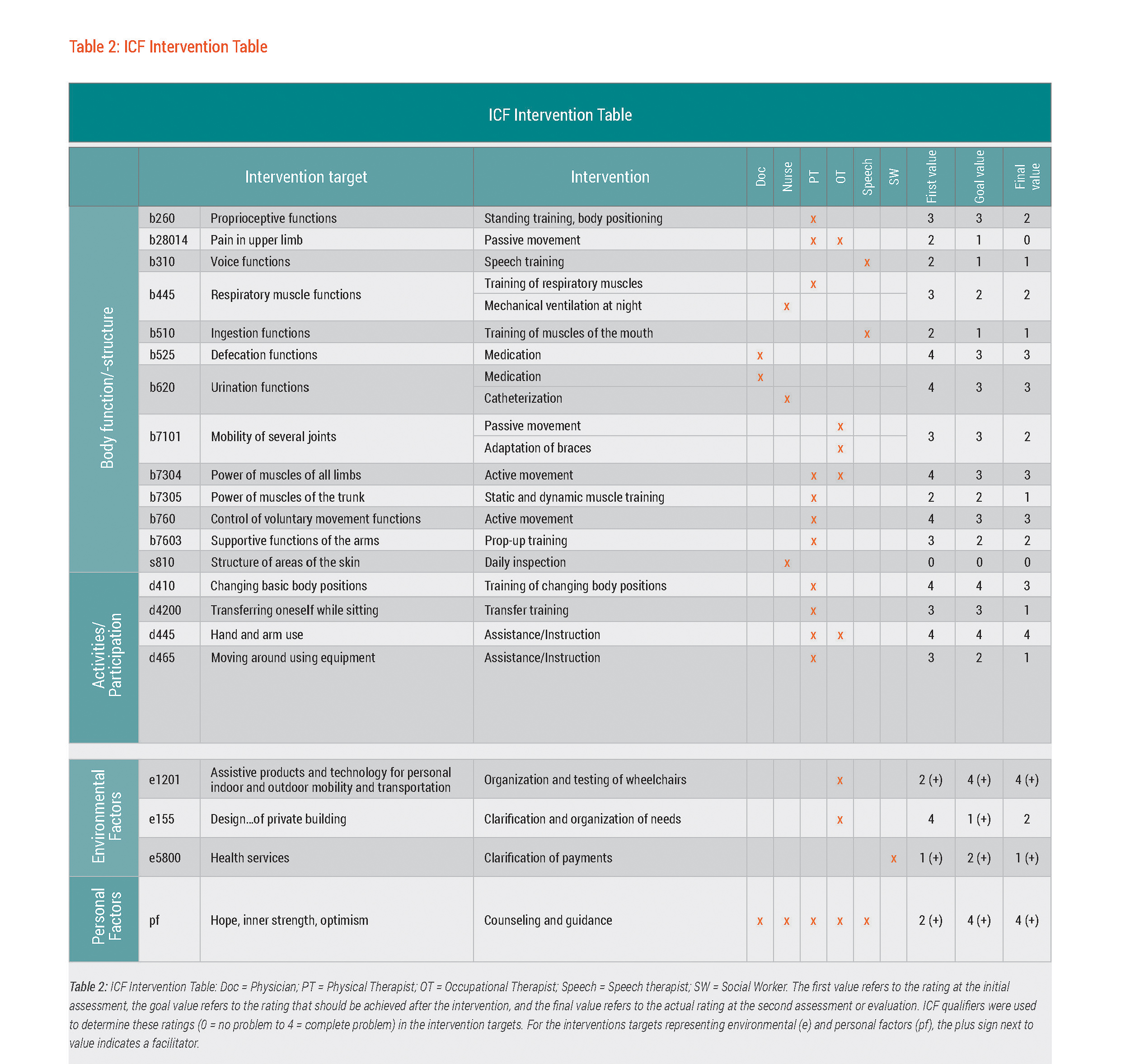Goal-setting/Determination of Intervention Targets
I really believe that things will change. And I continue to be hopeful that change is possible despite minimal recovery in such a long period of time. If I didn’t believe this, nothing would happen.
Helen
Goal-setting – Striking a Balance
Helen’s sense of hope and consequently her personal goals centred on improving her hand functions. Due to the slow course of her initial Rehab-Cycle® following her release from the intensive care unit, Helen found her dependency on others at the best of times difficult and at the worst of times degrading. She particularly disliked being washed and dressed by others. For this reason the use of her hands was essential to re-attaining the dignity and independence she desired. Accordingly, all of her psychological focus and efforts went into reaching a level of fine hand function that would again allow her the freedom to dress and clean herself independently and attend to her normal activities of daily living.
However, given the uncertainty surrounding the prognosis for GBS, Helen's rehabilitation team was conservative in setting goals. Moreover, the rehabilitation team felt that substantial improvement in hand functions was an unrealistic goal at that point in time. At the same time Helen's rehabilitation team recognized that Helen’s desire for enhanced hand use and ultimately increased autonomy was driven by her intrinsic inner strength, hope and optimism.
In the end, Helen's rehabilitation team decided to defined ‘optimal independence’ as a global goal. This goal was intentionally kept broad to allow for adaptation according to Helen's progress. This and other more detailed goals were outlined in the ICF Categorical Profile, a visualization of Helen's functioning status at the time of the assessment as reflected in the rating of relevant ICF categories using ICF qualifiers. Along with her long-term goals i.e. global goal and service-program goal, Helen's ICF Categorical Profile also shows her short-term cycle goals. See table 1.

Table 1: ICF Categorical Profile; ICF Qualifier: rate the extent of problems (0 = no problem to 4 = complete problem) in the components of body functions (b), body structures (s), activities and participation (d) and the extent of positive (+) or negative impact of environmental (e) and personal factors (pf); Goal Relation: 1, 2, 3 refers to Cycle goal 1, 2, 3; SP refers to Service-Program Goal; Goal value refers to the ICF qualifier to achieve after an intervention.
For this Rehab Cycle, a service-program goal was set – discharge to home. To achieve the service-program goal, more specific cycle goals were elaborated:
- Improved speaking and ingestion functions
- Improved respiratory functions
- Improved mobility through increased independence in transferring, changing body positions and wheelchair mobility
Identification of Intervention Targets
For the service-program goal and each cycle goal appropriate intervention targets were identified. Intervention targets are those ICF categories that are to be addressed with interventions in the rehabilitation program. Helen's ICF Categorical Profile includes ICF categories that reflected the results of the assessment and subsequently documented on the ICF Assessment Sheet. However, not all of the categories listed were defined as intervention targets, since only categories for which a goal was identified and were addressed in the intervention phase of the Rehab-Cycle® were considered intervention targets.
The intervention targets were documented in the ICF Intervention Sheet.

